Many gardeners want to attract wildlife and birds, including hummingbirds, to their garden. However, they are unsure what they should plant to draw them in.
A wide range of native trees, shrubs, and flowers can attract hummingbirds to your garden.
And in this article, we shall discuss the 14 best flowers to attract hummingbirds in your garden. We will also share a guide to care for them.
Bee balm
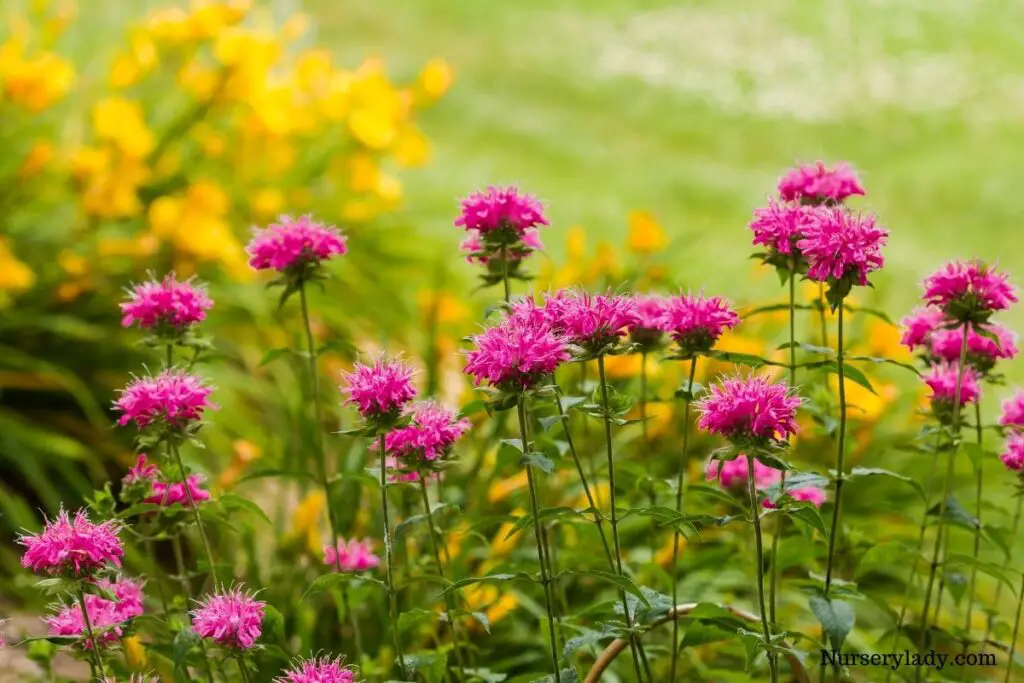
Bee balm produces clusters of tubular bloom in varieties of color. They are beautiful aesthetic flower plants with fragrance and spread aggressively, and their spikes attract a variety of wildlife such as bees, hummingbirds, and butterflies.
Sunlight: Bee balm thrives in full sun but will grow in partial shade too. Less light can make the plant leggy and reduce its abundant blooming. They will grow well in the shade in hot summer than in moderate weather.
Watering: Water bee balms consistently to keep it moist as it loves moisture. Check the soil’s moistness every few days and water it as it gets halfway dry. When it is young, water it frequently for a strong root system.
Fertilizer: Bee balm does not need fertilizer to stay healthy, especially if the soil mix is rich and light. You can feed it with a balanced fertilizer once in spring and not more than that.
General care: Bee balm is happier in warm temperatures but will survive in almost all cultural conditions. Plant new seed only when the temperature is 40 degrees Fahrenheit or above. For prolonged blooming, deadhead the flowers after the blooming and prevent self-seeding.
Cardinal flowers
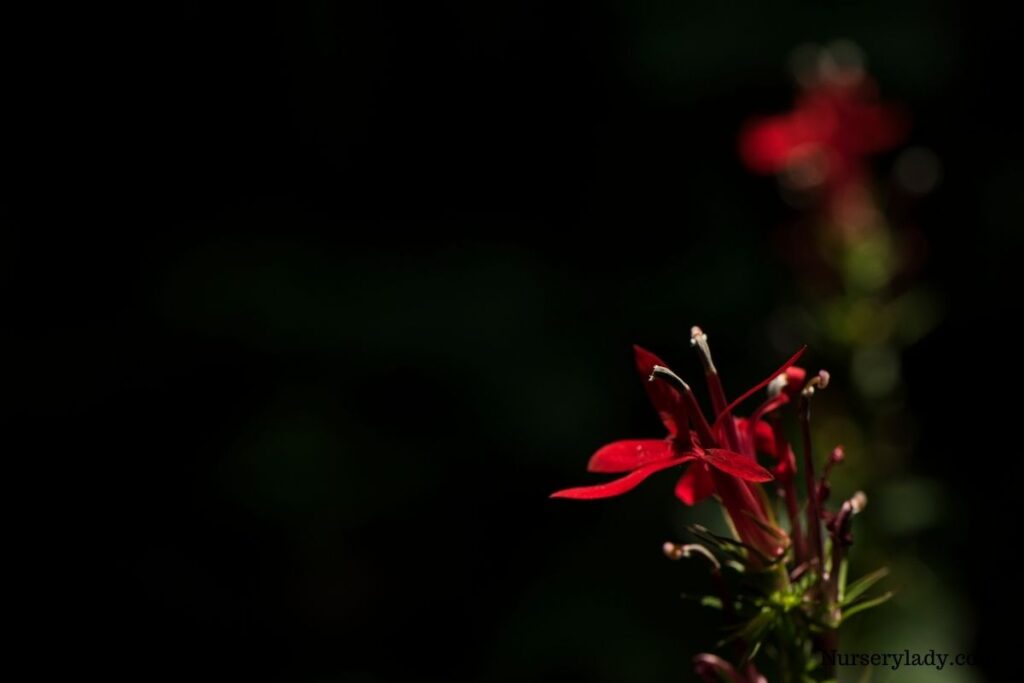
Cardinal flowers had toothed foliage and bright red blooms that had unique looks. They are a great choice to fill any space with beauty. Along with that, humming bees, butterflies love pollinating these bell-shaped flowers.
Sunlight: Cardinal flowers grow well in good lighting. They will grow in part shade too but enjoy full sun. Please keep them in full direct sun rays in cold areas and in hotter areas; keep them in partial shade. It is better to save them from the afternoon’s intense sun.
Watering: Cardinal flowers like moist soil and can even survive flooding. It is crucial to water them consistently and keep them evenly moist. Do not let its soil dry out completely before watering.
Fertilizer: Feeding is not crucial for cardinal flowers’ growth and development. You can feed them with compost and organic material in early spring; that is enough for their growth.
General care: Cardinal flowers can live in various conditions and love high humidity. Protect them from frost and freezing temperatures by keeping them near safe temperatures like vents, radiators, fireplaces, etc., to help them overwinter. You can add mulch in such temperatures to help them grow back in growing months.
Zinnias
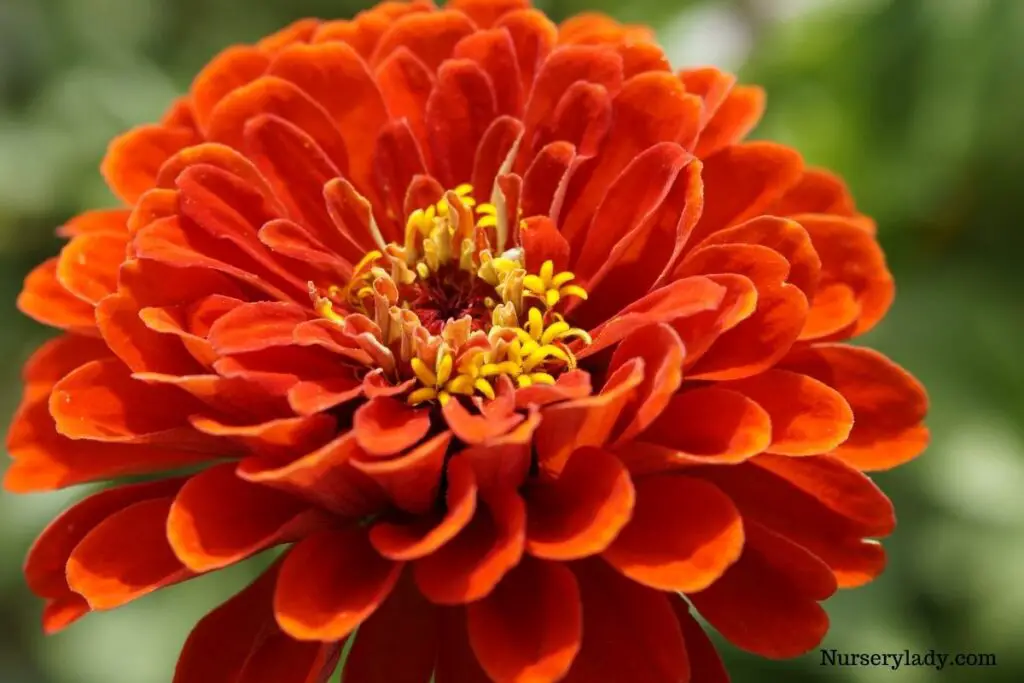
Zinnias are beautiful flower plants with bold colors, including some whites too. They grow easily and fast with minimal care. Dwarf varieties grow 6-inches tall, and tall varieties can grow up to 4-feet tall. Hummingbirds, bees, etc., love them.
Sunlight: Zinnias are happiest in full sun. For abundant blooms, keep your zinnias in a sunny spot. It will also prevent powdery mildew.
Watering: Zinnias require little watering and are drought tolerant. They do not like moist soil and can grow in long periods of drought.
Fertilizer: Zinnias does not need any feeding to develop. If they have a well-draining soil mix, even if it is poor, the plant will still keep growing. If you wish, you can fertilize them with diluted balanced fertilizer.
General care: Zinnias work well in hot temperatures and will stay healthy in the warmest hardiness areas. Deadhead the flowers for prolonged blooming but not crucial for blooming.
Looking for gardening supplies? We have tested 100's of products before recommending them to you guys. Check out our best pick below:
| Image | Gardening Supplies | Best Price? |
|---|---|---|
 Top
Top Top
Top | Raised Garden Bed Kit | Check On Amazon |
 | XLUX Soil Moisture Meter, Plant Water Monitor, Soil Hygrometer Sensor for Gardening, Farming, Indoor and Outdoor Plants, No Batteries Required | No Results |
 Top
Top Top
Top | 82 Pcs Garden Tools Set and Extra Succulent Tools Set | Check On Amazon |
 | Joeys Garden Expandable Garden Hose with 8 Function Hose Nozzle, Lightweight Anti-Kink Flexible Garden Hoses, Extra Strength Fabric with Double Latex Core, (50 FT, Black) | No Results |
 Top
Top Top
Top | Dual Chamber Compost Tumbler | Check On Amazon |
 Top
Top Top
Top | Sunnyglade Plant Stakes | Check On Amazon |
 Top
Top Top
Top | Organic Cold Pressed Neem Seed Oil | Check On Amazon |
 Top
Top Top
Top | Mighty Mint Gallon :-Insect and Pest Control Peppermint Oil | Check On Amazon |
 Top
Top Top
Top | Scotts DiseaseEx Lawn Fungicide | Check On Amazon |
 Top
Top Top
Top | Jacks Classic 20-20-20 All Purpose Fertilizer | Check On Amazon |
 Top
Top Top
Top | 30,000 Seeds Pollinator Attracting Wildflower Mixture | Check On Amazon |
 Top
Top Top
Top | Survival Vegetable Seeds Garden Kit-Over 16,000 Seeds | Check On Amazon |
Red salvia
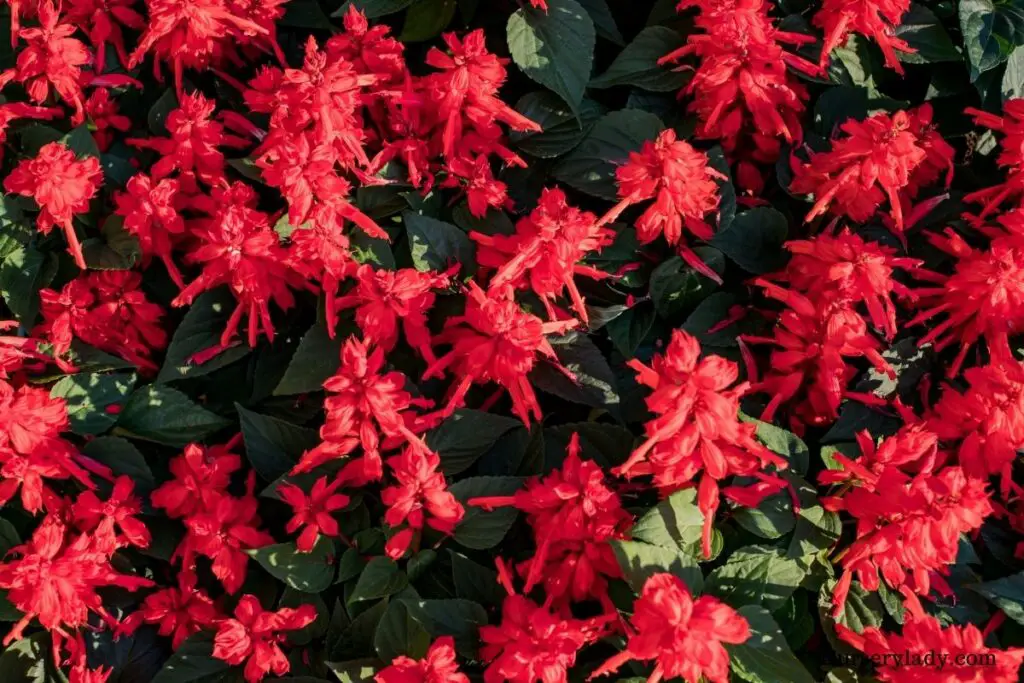
Red salvia is a stunning flower plant with dark-green foliage, and it adds color to your garden with minimal care. They also attract hummingbirds, bees, and butterflies due to their tubular-shaped flowers in different colors.
Sunlight: Red salvia thrives in good lighting; they grow better when receiving bright light the whole day. In low light, the plant will grow but not as healthy as in bright light.
Watering: Water red salvia to keep the soil evenly moist and avoid overwatering them. Water by checking the soil moistness and water only if the soil is halfway dry. You can dig your finger into the top few inches of the soil and check if the soil is moist or needs water.
Fertilizer: Feeding red salvia with balanced flower fertilizer once in the spring will keep them happiest. They do not need more feeding and will develop with little feeding.
General care: Red salvia is sensitive to temperature shifts, and they cannot bear temperatures below 32 degrees Fahrenheit. Please keep them in a safe spot in freezing temperatures. You can keep them at a safe distance from vents, radiators, fireplaces to keep them warm.
Bleeding heart
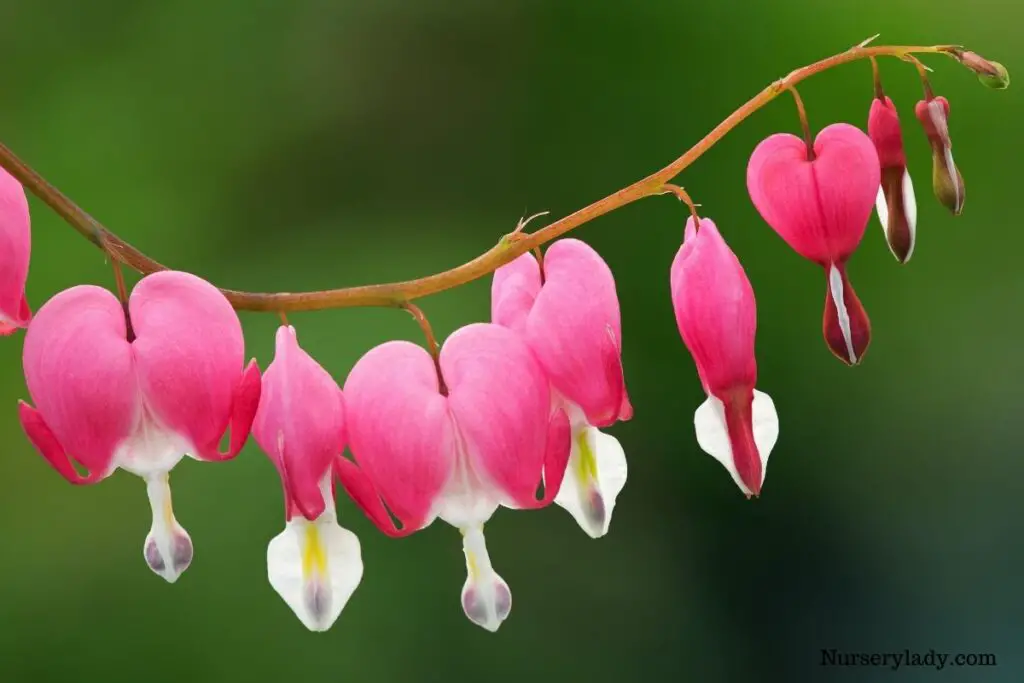
Bleeding hearts produce pillow-like flowers in heart shape dangling on arching stems. They are pink-white, and they are fast-growing plants that can grow up to feet high. They attract hummingbirds, butterflies, etc, and will flourish in your container garden.
Sunlight: Bleeding hearts like to grow in partial shade. You can grow near a deciduous tree that will provide enough light and shade to grow and develop. Full and direct sun, especially in hot summer, can scorch their leaves.
Watering: Water bleeding heart consistently throughout summer. Check the soil by digging your finger in the soil up to 2- inches and water if the soil is dry but do not let the soil fully dry. Ensure to keep its roots hydrated and allow proper drainage.
Fertilizer: Your bleeding heart is a light feeder and may need fertilizing if the soil is poor. You can feed them with a balanced fertilizer or top-dress with leaf mold.
General care: Bleeding heart thrives in temperature levels between 55 degrees Fahrenheit to 75 degrees Fahrenheit. The plant may yellow when the temperature level rises above the ideal temperature. They can also tolerate high humidity. Plant it in a large pot for better growth and development.
Butterfly bush
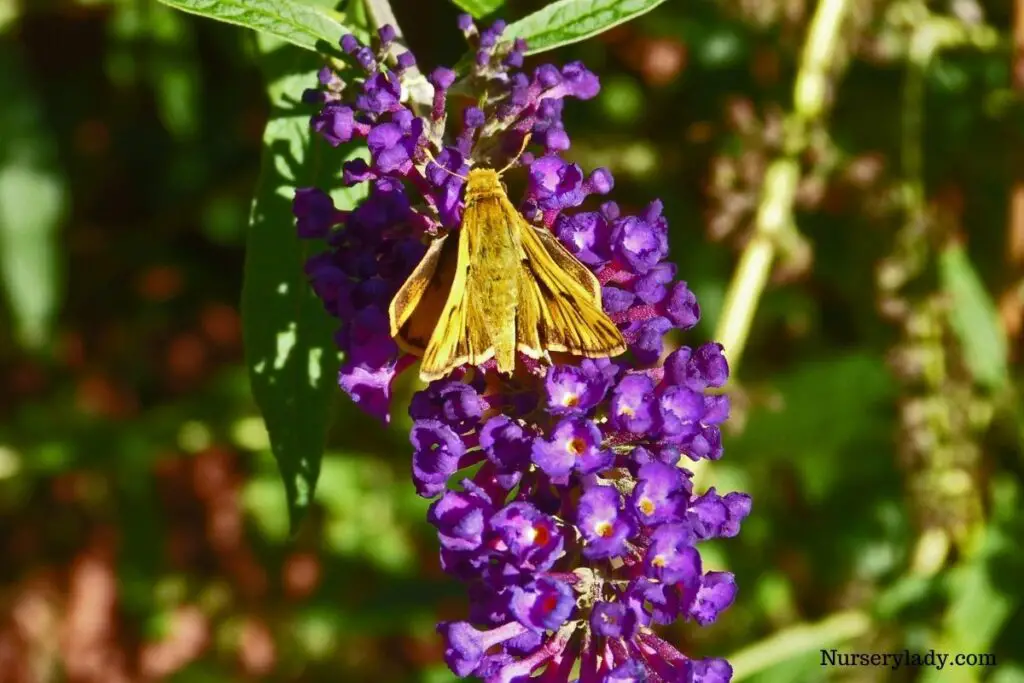
Butterfly bush produces attractive pink, white, red, dark purple blooms and grayish-green leaves. They grow rapidly in a favorable environment and are a favorite amongst hummingbirds, monarchs, butterflies, etc. they are invasive and should be deadheaded to keep it in bounds.
Sunlight: Keep your butterfly blush in the brightest part of your home or outdoors. They love full sun and will grow rapidly in full sun. In hot summer, you can keep them in partial shade to prevent their leaves from scorching.
Watering: Butterfly blush can be watered when the soil is halfway dry, and you can simply check the soil from the top by digging a finger up to 2 inches and checking if the soil is dry. They can tolerate short periods of drought too.
Fertilizer: Feed butterfly blush with a balanced diluted fertilizer in spring. You can also apply a layer of mulch in the fall to make the soil cold hardy. Avoid over-fertilizing and use rich, well-draining soil mix for better growth.
General care: Prune butterfly blush to the growth in the late winter. New shoots will grow back in spring and improve flowering.
Trumpet vines
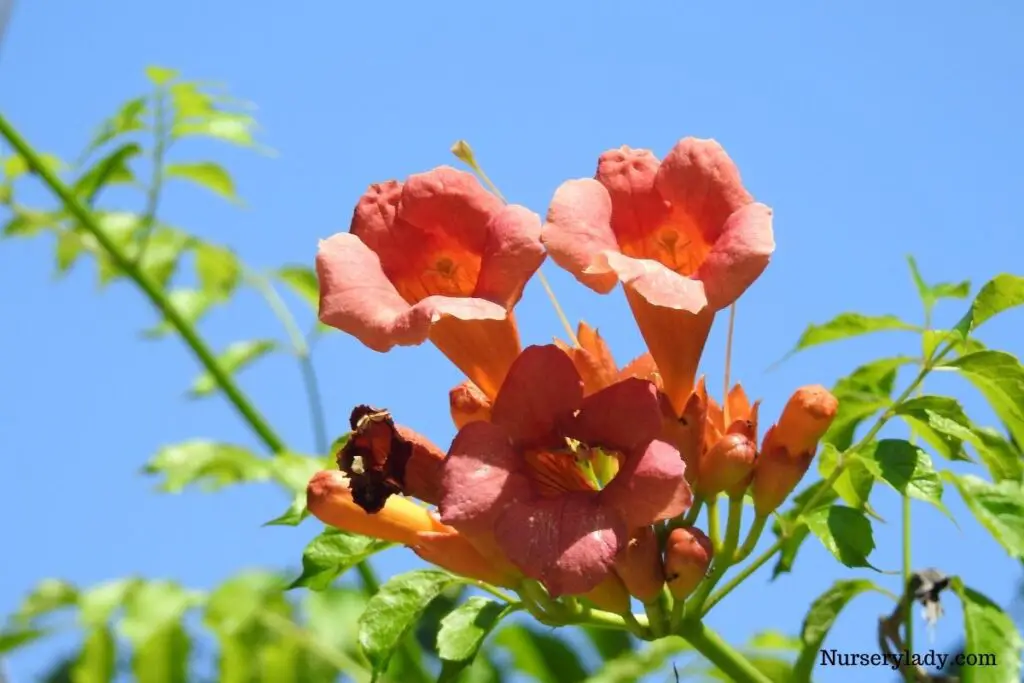
Trumpet vines have trumpet-shaped reddish-orange blooms that tempt hummingbirds, birds, etc. They have 15 inches of dark green foliage and clusters of flowers.
Sunlight: Trumpet vines grow well in full sun and even in partial shade. Keep them in a spot where they can receive 6-8 hours of sun in a day for bets blooming.
Watering: Trumpet vines are drought tolerant but will be happier in evenly moist soil. Water them when the soil is dry and keep the soil on the drier side than wet.
Fertilizer: Trumpet vines are light feeders and can thrive even without feeding. Avoid fertilizing them as it spreads aggressively, even in poor soil.
General care: Trumpet vines like hot and humid conditions. They can grow well in extreme temperatures. They will grow slowly in less humid climates.
Lupines
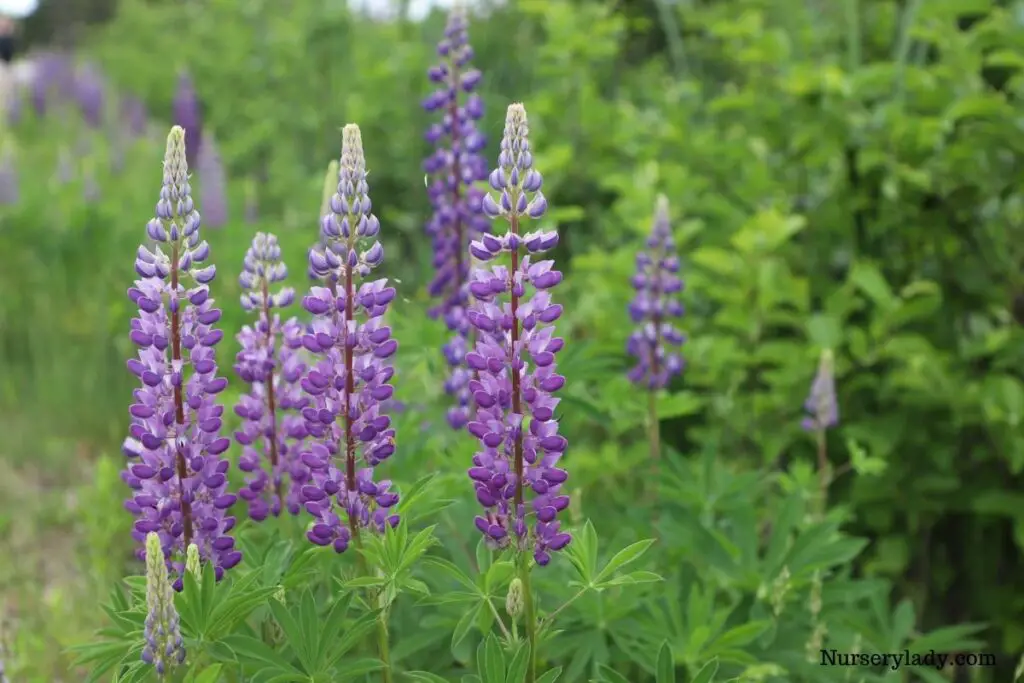
Lupines have colorful and showy flowers, and they are fast-growing, especially in favorable cultural conditions. The flowers attract hummingbirds, butterflies, etc. they look wonderful in walkways, containers, borders, etc.
Sunlight: Lupines will develop and bloom best in full sun. Keep them in 6-8 hours of direct sun. They will grow in partial shade too, but flowering will be less. In hot summer, keeping them in the shade will help from leaves scorching.
Watering: Water lupines regularly to keep them hydrated and soil moist. They do not appreciate overwatering and soggy soil can lead to root rot. Ensure proper drainage and water the plant when the soil is halfway dry.
Fertilizer: Lupines grow well without any feeding. You can look at the most feed it with acidifying fertilizer to lower Lupines soil pH level. Too much fertilizing will promote foliage growth at the expense of blooms.
General care: Plant them in the organically rich, well-draining soil mix. Protect them in extremely hot weather and humidity, as it can hinder their growth and flowering. Protect them from extreme cold, keep them near radiators, vents, fireplaces, etc.
Columbine
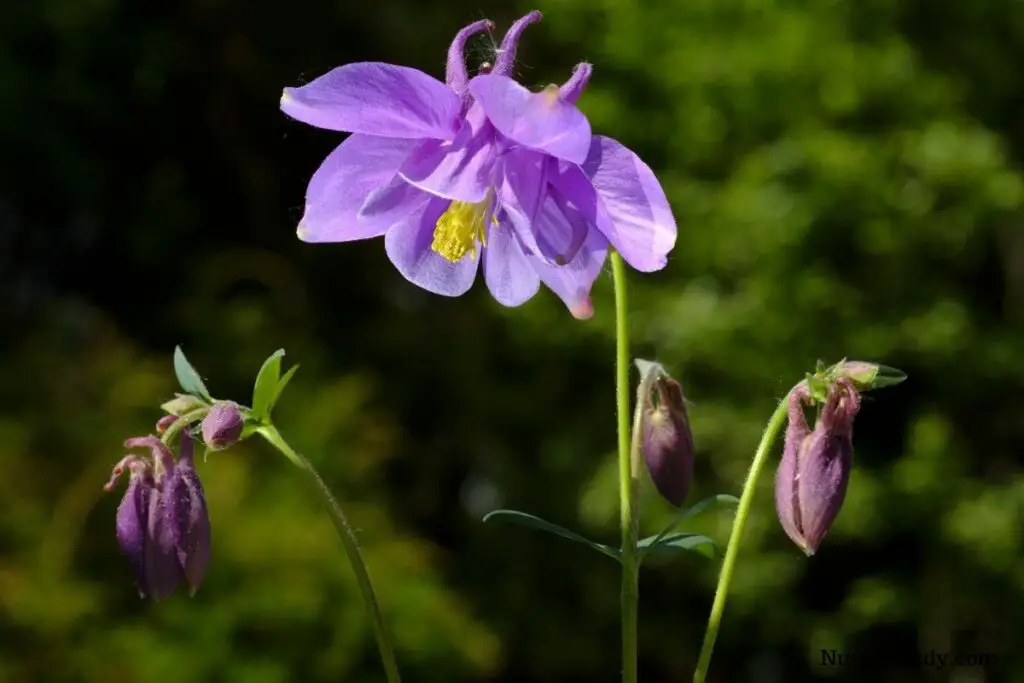
Columbine had clover-like attractive leaves and flowers in a variety of colors. They have average growth speed and will self-seed and grow several plants. They are among hummingbirds loving plants too.
Sunlight: Columbine thrives in partial shade and will grow well in bright indirect light. They can tolerate full sun in cool climates, but the direct sun will scorch its leaves in hot summer.
Watering: Keep the soil moist for columbine. Check the soil from the top few inches before watering. Water only when the soil is dry and avoids drowning it.
Fertilizer: Feed columbine with diluted balanced fertilizer throughout the growing season. Feed once every month to promote healthy growth and flowering. High nitrogen fertilizer helps in better flower production.
General care: Columbines grow well in cool temperatures; they are sensitive to excessive heat. Grow them in the well-draining soil mix with neutral to slightly acidic pH. Trim flower stems after blooming to promote flowering in the next season.
Petunias
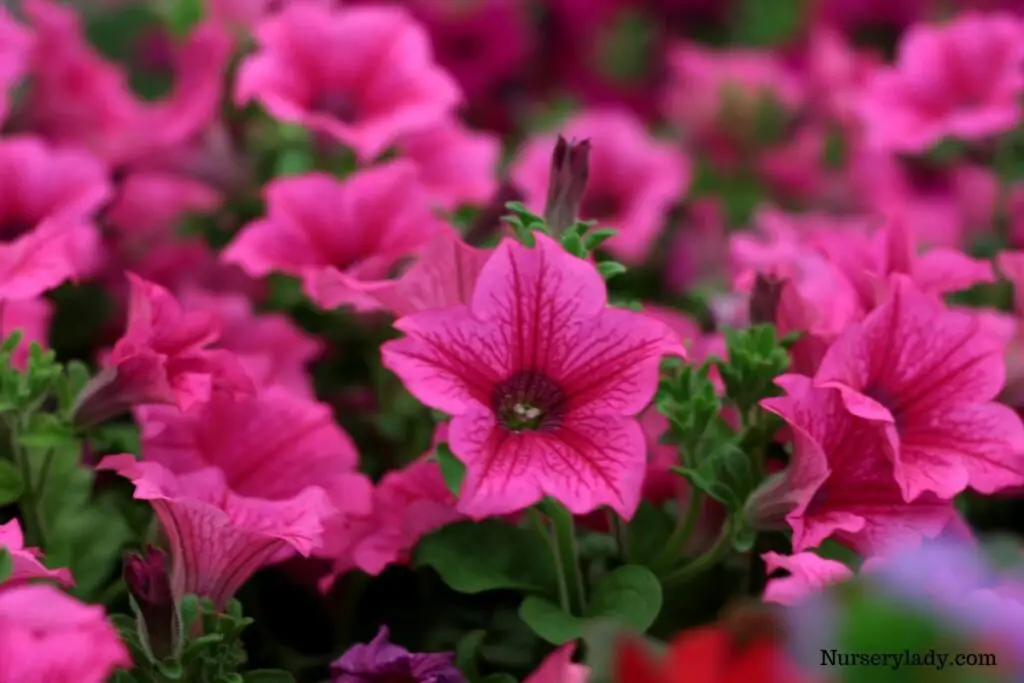
Petunias can be grown in containers and borders. They have trumpet-shaped flowers that come in almost every color except blue. They will attract beautiful butterflies, hummingbirds in your container garden, outdoor garden, etc.
Sunlight: Petunias grow best in full sun. Give them full light on most days. In hot summers, keep them in partial shade to save them from intense heat.
Watering: Petunias are happiest in evenly moist soil. Neither let it dry completely nor let it sit in standing water. Check the soil moistness first and water only when 1st few
inches of soil is dry.
Fertilizer: Petunias will grow well with fertilizing, especially when planting. Feed it with a balanced fertilizer, and you can add compost into the soil.
General care: Keep your petunias at a temperature level ranging between 60 degrees Fahrenheit to 75 degrees Fahrenheit. They can bear temperature levels as below as 40 degrees Fahrenheit. Please keep them in a warmer spot; otherwise, you may lose them. They enjoy low to moderate humidity.
Beardtongue
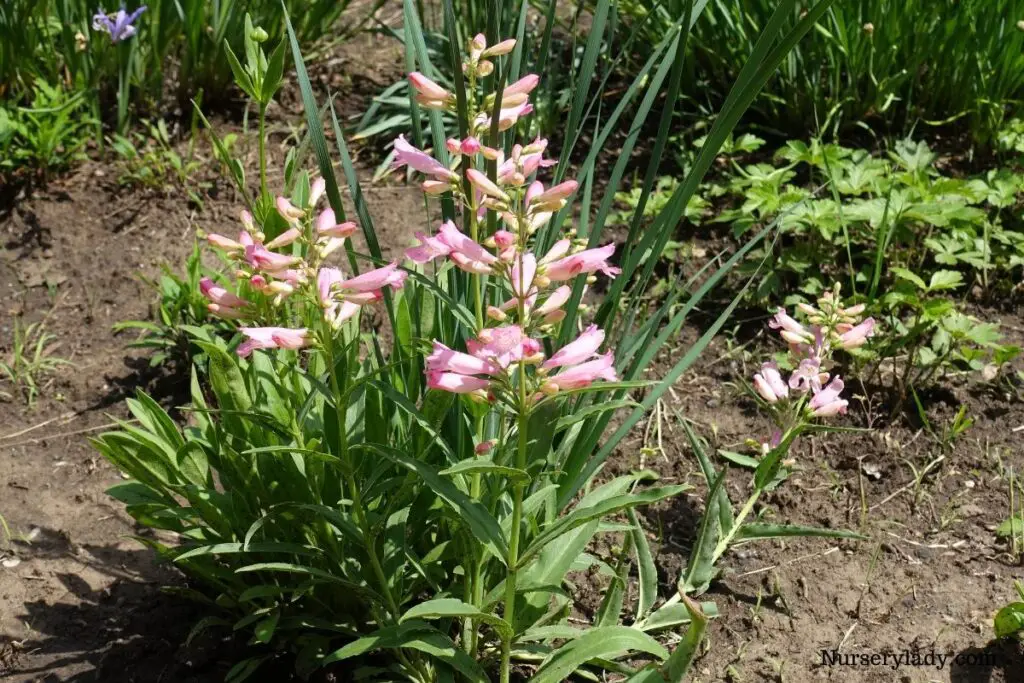
Beardtongue has attractive ornamental tubular blooms in different colors, lance-shaped leaves. They are easy growing but germinate slowly and grow up to 3 feet. They will attract a hummingbird, bees, birds, etc.
Sunlight: Beardtongue thrives in full sun. Keeping them in full sun exposure helps the plant stay healthy and strong, helps the stalks stay upright, and prevents drooping.
Watering: Water the beardtongue weekly to keep the soil evenly moist. Do not overwater it as it can lead to root rot. They are drought tolerant but watering in regular intervals will help better growth and blooming.
Fertilizer: Beardtongue will benefit from feeding in the fall. Feed it with organic fertilizer by diluting it to half the recommended strength. Please do not use any bloom-boosting food as it will promote growth and shorten the plant’s life.
General care: beardtongue can grow in a variety of humidity conditions. Cut flower stems after blooming to keep them clean and prevent self-sowing. Plant them in a well-draining, sandy soil mix, and you can amend it with compost too.
Hostas
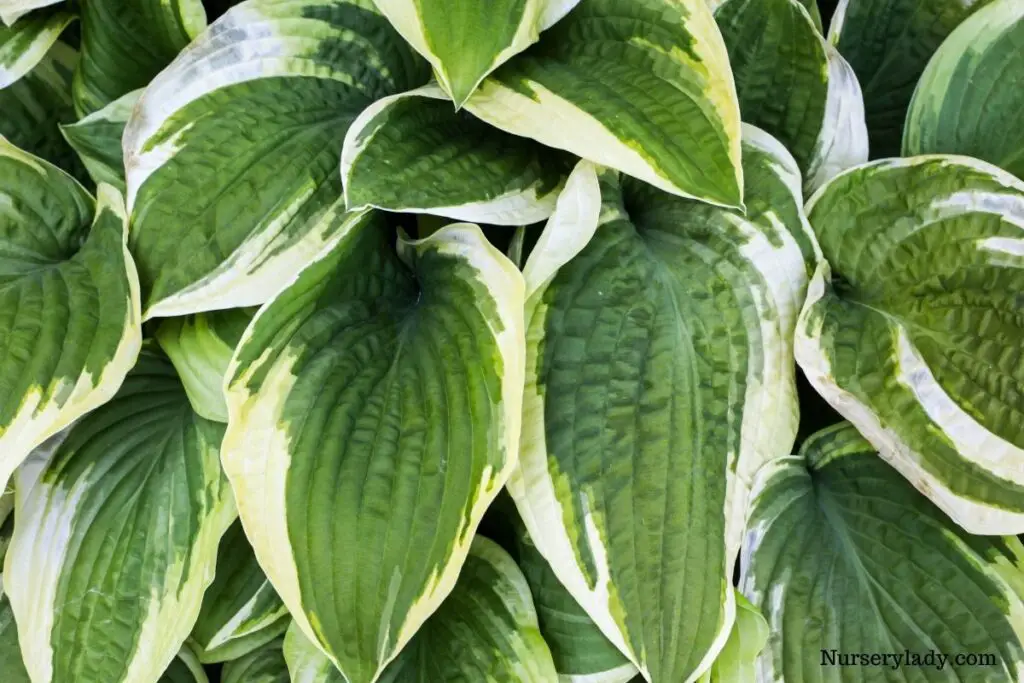
Hostas have flowers on long stalks and attractive heart-shaped foliage in shades of yellow-green. They are easiest to grow and generally mature in 5 to 7 years. Their bell-shaped flowers attract hummingbirds, becoming great nectar sources too.
Sunlight: Hostas are shade-loving plants. Keep them in dappled sun and for variegated leaves, give them morning sun. Avoid keeping them in full sun; it can affect their growth.
Watering: Hostas need water to stay moist, but wet soil will lead to root rot. They can stay dry for some time but suffer in drought. Check the soil moistness to ensure proper watering and also check the drainage system.
Fertilizer: Add a few layers of compost into the hosta’s soil in the spring to give a nutrient boost to them. You can use balanced fertilizer to feed them in spring or after planting. Fertilize by diluting it to half the strength; otherwise, it can burn the roots.
General care: Hostas can grow in a variety of humidity and temperature. Please keep them in a safe place during strong winds and frost. Cool weather is essential for their winter dormancy.
Catmint
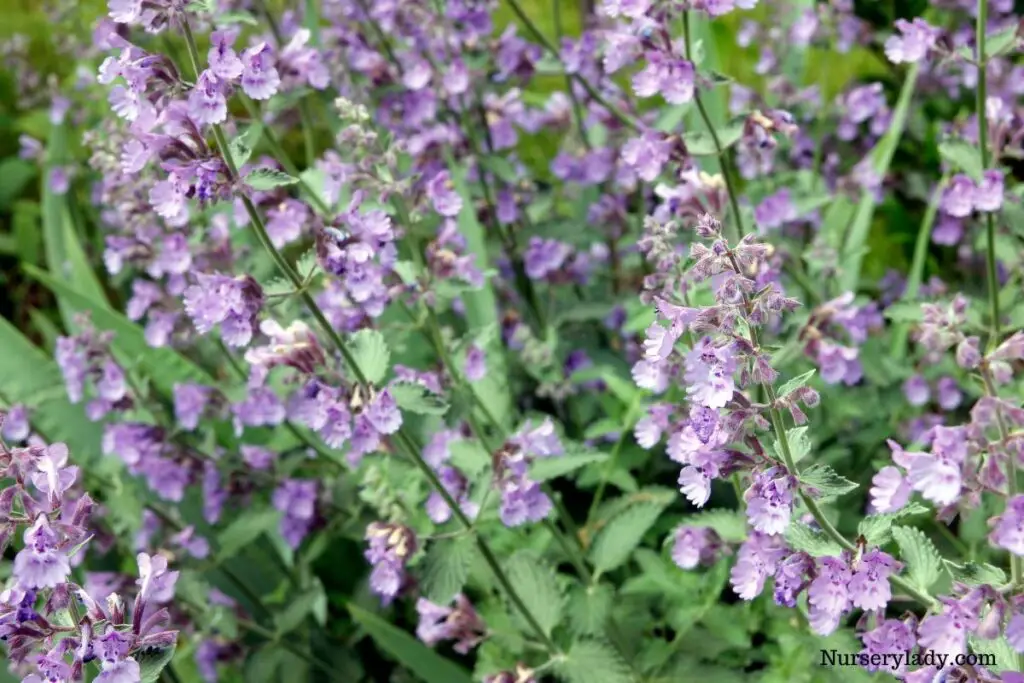
Catmint has delicate gray-green leaves topped with spiky blooms in pink, white, and lavender colors. They are easy-growing, aromatic, and bloom throughout the season. Different varieties grow differently in size like some grow up to 2 feet, some 4 feet tall. They look great as walkways and attract hummingbirds, bees, etc.
Sunlight: Catmint can grow well in partial shade to full sun. They will be bushier and produce abundant flowers when kept in the full sun each day.
Watering: Catmint appreciates frequent watering but does not over-water it. Mature plants are drought tolerant, but proper watering will promote better blooming.
Fertilizer: Catmint grows well without any feeding and will be happy if the soil is lean and well-draining. You can add compost into the soil in the fall to boost bloom and growth.
General care: Catmint prefers cool temperatures and average humidity. In extreme conditions, move them to safe and favorable conditions. Trim catmint to grow bushier foliage and lush blooms.
Agastache
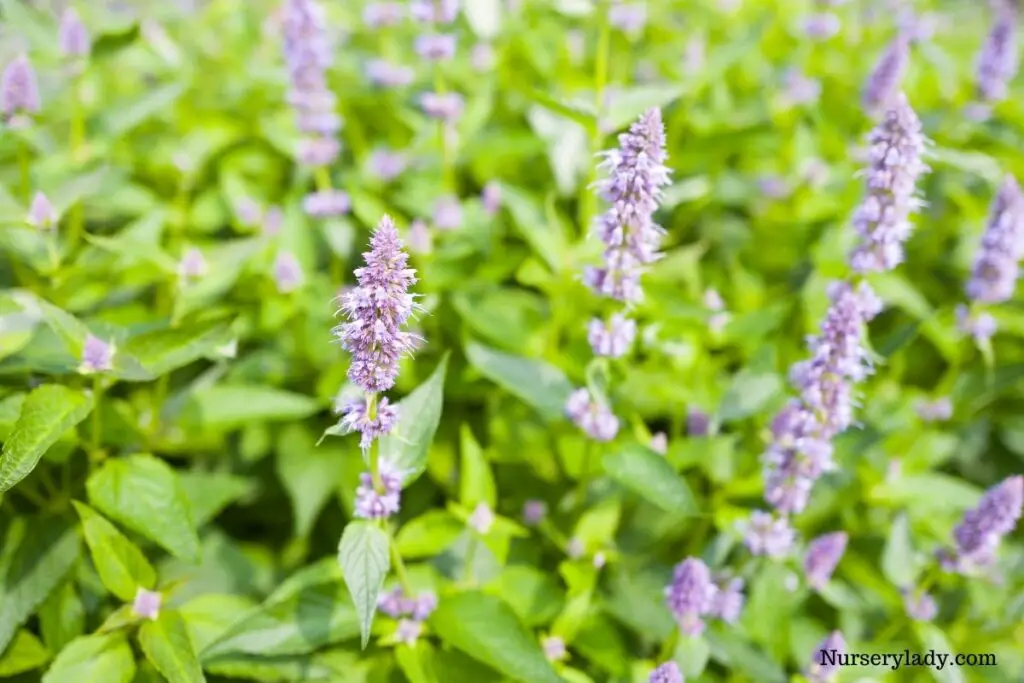
Agastache is loved for luring pollinators. They are beautiful plants with herby fragrances producing spiky flowers in colors like pink, purple, blue, white, red, orange, etc. Their different varieties have different requirements and produce different colored blooms.
Sunlight: Agastache prefers full sun exposure and grows well in the hottest sun. Please keep it in a spot where it can receive full-day sun exposure.
Watering: Agastache should be watered thoroughly to ensure the water has reached its roots. Ensure proper drainage, as keeping them consistently moist is not good for them.
Fertilizer: Agastache does not ask for any feeding and will grow well without it. In autumn, you can top dress the soil with compost to keep it healthy.
General care: Agastache likes hot temperatures and thrives in strong sun exposure. Low to average humidity is fine for them, but high humidity is not suitable as it may lead to root rot. Apply some gravel during winter to keep the roots dry. They do not need rich soil to grow, and lean soil is good enough.
Reference: The University of Minnesota, Kansas State University, BBC Wildlife Magazine, Arizona-Sonora Desert Museum.
